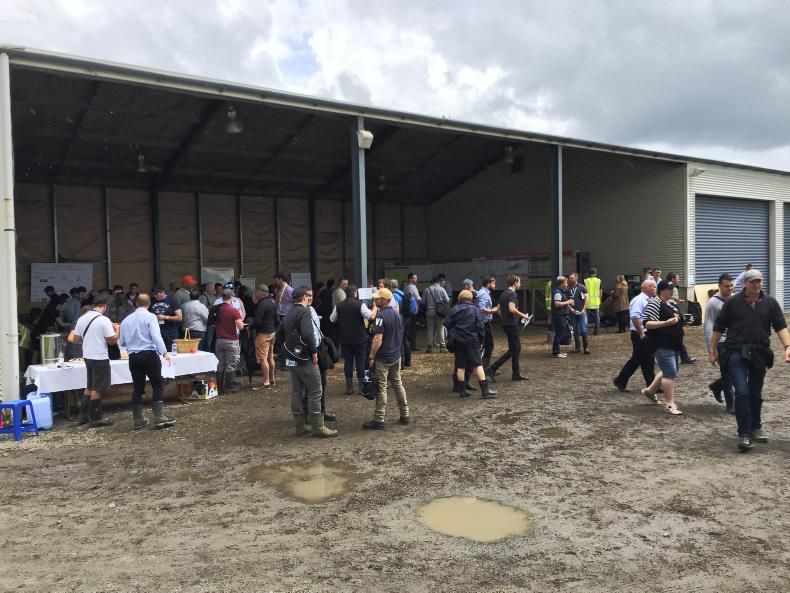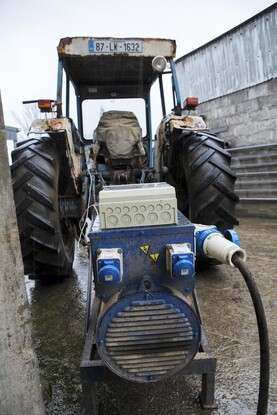The opening address at Pasture Summit set the scene. It was delivered by Michael Murphy from Co Cork. The research and development budget for confinement-based dairy farming is €6.6bn per year. The driver of these systems is maize silage and yields of maize in Europe and North America are increasing by 3% per year. Average maize yields have gone from 30 bushels/acre in 1900 to 175 bushels/acre in 2017.
In contrast, grassland yields are increasing by a meagre 0.2% per year. At the current rate of progress, it will take 360 years for grass yields to double. The proposed solution: countries that rely on grass for their competitive advantage must work together to advance progress.
Last week’s Pasture Summit shone a light on some of the practices in New Zealand. Many people feel the bulk of farmers there have lost their sense of direction. Rising costs and much higher debt levels have eroded a lot of the competitiveness that the country enjoyed during the 1990s and early 2000s.
Over the last 20 years, the interest rate has halved, but debt levels per kilo of milk solids (kgMS) have almost trebled. An extra NZ$6bn (€3.58bn) of debt was added during the 2015/16 and 2016/17 milk production seasons. This equates to an average of NZ$0.5bn (€300,000) of extra debt per farm. This debt wasn’t used to buy land or build milking parlours – it was used to fund cashflow during the low milk price years.
Mark Grenside, from ANZ Bank warned that New Zealand banks, under pressure from their Australian parent banks and the New Zealand National Reserve, will no longer fund cashflow during future downturns. In fact, they want this money repaid, and quickly.
Furthermore, for a new loan to be sanctioned the proposal must show an ability to repay the capital. For the past 20 years, most loans were interest-only and farmers could decide to repay the capital if they wished.
The banker said that capital gain (increase in land value) between 1998 and 2008, averaged 5.5% per annum over the rate of inflation. But over the last 10 years, capital gain has dropped to 0.2% over the rate of inflation and land prices are, at best, static. Anecdotal evidence suggests that there are over 1,000 farms for sale, but they are not selling.
Mark Neal from Dairy NZ presented financial data to show that over the last 12 years, average operating expenses on New Zealand dairy farms recording their data in Dairy Base (Profit Monitor equivalent) was $4.90/kgMS (€2.92/kgMS).
This figure includes own labour but is before interest payments, which typically adds about $1.20/kgMS (€0.72c/kgMS) to cash costs. With an expected final milk price for the season at about $6/kgMS (€3.60/kgMS), stock sales and the diminishing Fonterra dividend will be the only surplus cash for most dairy farmers at the end of this season.
Costs
Faced with these challenges, a large emphasis was placed on using grass to cut costs. Robert Ferris is a dairy farmer in his early 30s milking 3,200 cows across four farms in a family-run business. The Ferris farms utilise between 13t/ha and 14t/ha of grass per year. Stocking rate is 3.23 cows/ha and average milk solids production is 1,000kg/ha/year. Winter crops are grown on 5% of the farm and all cows are wintered on the platform and, since 2013, only 150kg of imported supplement is fed during the winter.
Only 50% of the cows get dry cow therapy and no teat sealers are used in any cow. Average SCC ranges between 120,000 and 140,000 and empty rates are between 5% and 7% per year with no intervention. Animal health costs are $40/cow (€34/cow).
The average working day is 8.4 hours per person, with total hours worked per person at between 2,150 and 2,300 per year. There are 210 cows per full-time equivalent on the farm and labour costs are $0.95/kgMS (€0.57c/kgMS). Total operating expenses on the Ferris farms are between $3.20 and $3.50/kgMS (€1.92 to €2.10/kgMS), well below the average.
Robert explained that he wasn’t always a low-cost farmer. Palm kernel was introduced as a feed in 2009 and he says for the next few years the farm was production driven, a time he described as busy and complicated.
“We were more worried about the $1 we might miss out on than the $2 it cost to achieve it,” Robert said.
“At the time, my opinion of lower input and all pasture-based systems was that they had to be run at a lower standard to everyone else. How else could they have such low costs? It was only when I went to visit these farms did I realise that they were actually really well run with the system designed around delivering really high quality feed to the cows all year.” Robert said.
Research
Needless to say, there was a strong focus on science-based research at the two-day event, organised by Pasture Summit – the think-tank for improving the competitiveness of grass-fed dairying.
Moorepark researchers Brendan Horan, Laurence Shalloo and Donagh Berry all spoke. Former Dairy NZ researcher John Roche gave a convincing paper on the use of supplements.
He said that when looking at the profitability of feeding extra meal to increase milk yield and profit, the extra milk produced should be costed against all the extra feed. He calls this marginal milk and if the marginal revenue is not greater than the marginal cost it does not make sense to feed extra meal.
“Why milk more cows just to give away money to someone else and be busier at it? I think a sensible system is to plan to supplement about 10% of the cow’s diet with bought-in feed. In most cases, this is about 500kg of supplementary feed per cow. If the price of this feed doubles, or if twice as much needs to be fed due to weather or whatever, the system won’t collapse,” Roche said.
On genetics, Malcolm Ellis from LIC discussed the importance of good records at farm level. He said that about 25% of cows in New Zealand have a different sire to what is recorded. This is making sire evaluation difficult and reducing the reliability of the data. LIC is hoping to assemble 1,000 herds that accurately record parentage and participate in milk recording.
The second day of Pasture Summit was a series of workshops held on farm. One of the workshops was on the environment and mitigating the risks from dairy. In terms of water quality, the industry is currently grappling with new regulations on phosphorus, nitrogen, E coli and sediment. By 2020, every dairy farm in the Waikato district is to have a nitrogen reference point.
This reference point is how much nitrogen is being leached from each farm, as calculated by a computer model. Farms above the 75th percentile of leaching will have to implement a plan to reduce their nitrogen leaching to the 75th percentile. Different regions will have a different Plan Change based on soil type and land use. In terms of sediment and E coli, the control measure for this is to fence off livestock from waterways and plant vegetation to prevent soil erosion.
Over 1,000 farmers attended the event, organised by farmers with help from Dairy NZ.
The next Pasture Summit will take place in Ireland in 2020. In the interim, an international auditing firm is being commissioned to write a report on the competitiveness of grass-based dairy farming. This will be tracked over time to see if progress is being made.






 This is a subscriber-only article
This is a subscriber-only article










SHARING OPTIONS: